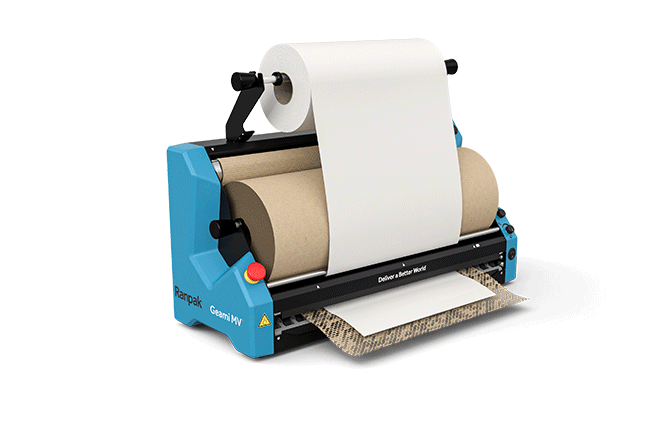3 Pressures Fueling Pack Station Evolution
Warehouse
April 30, 2024
Warehouse
April 30, 2024
Packing stations are the lifeblood of businesses large and small. These dedicated spaces allow them to get their goods from warehouse shelves into the hands of their end-customers while maximizing packaging protection and presentation. These environments are characterized by limited space and a need for efficiency. Between storing products, packaging materials, and the converters that dispense these materials, every bit of space in and around the pack station should be devoted to utility.
For some businesses, such as third-party logistics (3PL) providers, their entire model is based on the effective flow of goods to the right stations and packaging solutions. Other businesses, such as those that combine e-commerce with brick-and-mortar locations, need to pay careful attention to how they balance their warehouse needs with those of their customer-facing operations. Ultimately, the need to balance ergonomics with maximum productivity has led to an evolution of packaging solutions, meeting the needs of the present and anticipating the future of fulfilment.

Staffing challenges are top of mind for supply chain professionals, with 20% citing it as their number one challenge according to a 2024 study by Prological. Finding talent for the warehouse can be difficult, but even after hires are made they must complete onboarding before reaching their full potential for productivity. When combined with high turnover and competition for talent, that means that the best pack station mechanics will be easy to pick up and use without a significant training period.
Warehouse managers can look for features such as batch and recipe modes that help simplify the operation of packaging solutions, as well as those that remove as many process steps as possible. For example, Geami® material wraps products while interlocking with its own honeycomb texture, eliminating the need for cutting blades and tape at the wrapping station.
Learn more about the benefits of Geami® paper
New regulations including the EU Packaging Directive and EPR laws such as those passed in certain US states, Europe, and Australia, put more pressure on businesses to change their packaging to easily recyclable and sustainable materials.
Learn more about the EU Packaging Directive
Adopting paper packaging solutions in the warehouse makes it much easier for end-consumers to recycle the packaging that they receive with their products. Paper enjoys a high rate of recycling, with the World Economic Forum reporting paper and paperboard achieved a 68% recycling rate in in the US in 2021, compared to a rate of just 5-6% for plastics in the same year.
In addition to benefiting the planet, paper packaging solutions are also often preferred by customers. A 2023 survey conducted by Two Sides found that, when ranked by consumers against other materials across a field of 15 sustainable packaging attributes, paper & cardboard was their favorite for 10. Providing an appealing unboxing experience not only influences brand perception, but can also impact future orders.
Material and spatial efficiency are two of the most sought-after qualities for packaging solutions within a warehouse environment. Because of the limited surface area available within most pack stations, solutions that can be integrated above, below, or on the side of packing tables offer an advantage over less flexible options. Smaller, streamlined converter bodies can also help make a difference, provided that they are still producing packaging that is materially efficient, as well.
Learn more about warehouse ergonomics

For example, the difference between an on-demand wrapping material and one that is essentially pre-expanded, such as plastic bubbles, can make a difference in storage space where one material stores flat on skid or a roll until it is needed. For instance, one 750-foot roll of unexpanded die-cut Geami MV™ material contains 20% more cubic feet of product than a 750-foot roll of plastic bubble once the paper die-cut is fully expanded for use.

Similarly, the Trident Mini™ converter is able to produce paper void fill material using up to 20% less paper than comparable paper solutions, thanks to the unique triangular profile of the paper it produces.
Many pack station environments are experiencing the same pressures, from 3PL providers to e-commerce businesses, and more. Where space and efficiency continue to be a challenge, smaller and more efficient solutions will remain in demand.
The material benefits of these solutions are not accidental. Rather, they are innovations delivered by Ranpak in response to the pressures being felt in the warehouse today. Ease of use, a streamlined profile with powered output, and more material efficiency are key to providing the best packaging solutions to meet the most pressing supply chain needs.
You are now leaving the Ranpak website. The website you will be entering is not owned or operated by Ranpak and/or its subsidiaries. The content, products and information contained on third party websites are not owned or controlled by Ranpak and/or any of its subsidiaries. Therefore, Ranpak makes no representations about, does not endorse or adopt, and is not responsible or liable for damages relating to the third party, its products or services, its website, its privacy policies or practices, or the content of the third party website.